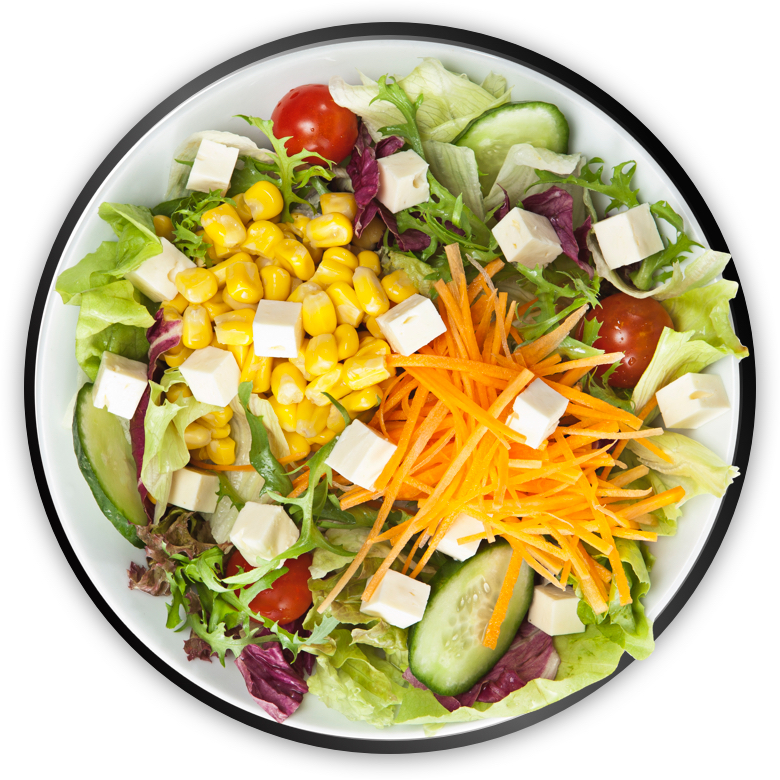As the saying goes, “you are what you eat."
Daily calcium and vitamin D requirements increase with age. Use the table below to determine how much of these essential nutrients you need.*
 IU=international units
IU=international units* Total diet plus supplement. Healthy adults between 19 and 50 years of age require 400 to 1000 IU daily. Those over 50 years or younger adults at high risk (those with osteoporosis, multiple fractures or conditions affecting vitamin D absorption) should receive 800 to 2000 IU daily. Taking more than 2000 IU of vitamin D daily should be done only under medical supervision.
Calcium
According to Osteoporosis Canada, women older than 50 years of age require 1200 mg/day of calcium (supplement & dietary intake combined). Making sure you get enough calcium is an important step towards good bone health. By doing so, you’ll maintain an adequate supply so that your body doesn’t have to dip into the reserve of calcium in your bones.It’s strongly recommended that you get the calcium you need from your diet whenever possible.
If you can’t get enough calcium from the foods you eat, you can also take a supplement.
What are some easy ways to work high-calcium foods or beverages into my diet?
A glass of milk – chocolate milk if you prefer. Skim milk products provide as much calcium as whole milk with the added advantage of less fat and cholesterol.
Soup made with milk (like cream of mushroom soup)
A 3-cm cube of cheese, which has as much calcium as a cup of milk.
Click here for the calcium content of some common foods.
| Milk and Milk Products | Portion | Calcium† |
|---|---|---|
| Milk – whole, 2%, 1%, skim, chocolate | 250 mL (1 cup) | 300 mg |
| Buttermilk | 250 mL (1 cup) | 186 mg |
| Cheese – blue, brick, cheddar, edam, gouda, gruyère, swiss | 3 cm cubed (1 ¼”) | 245 mg |
| Cheese – mozzarella | 3 cm cubed (1 ¼”) | 200 mg |
| Yogurt – plain, 1-2% M.F. | 175 mL (3/4 cup) | 332 mg |
| Milk – powder, dry | 75 mL (1/3 cup) | 270 mg |
| Cottage cheese – 1 or 2% | 250 mL (1 cup) | 150 mg |
| Fortified almond, rice or soy beverage | 250 mL (1 cup) | 300 mg |
| Fish and Alternatives | Portion | Calcium |
|---|---|---|
| Sardines, with bones | 55 g (1/2 can) | 200 mg |
| Salmon, with bones – canned | 105 g (1/2 can) | 240 mg |
| Tofu regular – with calcium sulfate | 84 g (3 oz) | 130 mg |
| Fruits and Vegetables | Portion | Calcium |
|---|---|---|
| Fortified orange juice | 250 mL (1 cup) | 300 mg |
| Kale – cooked | 125 mL (½ cup) | 49 mg |
| Collard greens – cooked | 125 mL (½ cup) | 133 mg |
Adapted from Osteoporosis Canada.
The calcium in soy beverage is absorbed at the rate of 75% of milk. The calcium in some foods such as sesame seeds, rhubarb, Swiss chard and spinach is not well absorbed, because of very high oxalate content, which binds the calcium. Therefore, these foods have not been included. Visit https://osteoporosis.ca/calcium-rich-foods/ for a list of other foods rich in calcium.


Vitamin D
Vitamin D helps your body absorb calcium from the foods you eat. Your body naturally produces vitamin D when you’re exposed to sunlight; however, during the winter months, most Canadians do not get enough sun exposure to produce adequate amounts of vitamin D. The best way to enhance your vitamin D intake is through dietary sources and supplements.

What are some easy ways to work high-vitamin D foods or beverages into my diet?
Milk, orange juice and vitamin D fortified yogurt
Several kinds of fish – such as salmon, tuna, snapper and swordfish – and some fish oils (halibut and cod liver oil).
Whole eggs (vitamin D is found in the yolk).
Click here for the vitamin D content of some common foods.
According to Osteoporosis Canada, women 50+ require 800-2000 IU of vitamin D per day (supplement & dietary intake combined).
| Vitamin D content of some common foods | IUs per serving* |
|---|---|
| Orange juice, fortified, 125 mL (½ cup) | 50 |
| Margarine, fortified, 5 mL (1 teaspoon) | 25-36 |
| Mushroom, white, 125 mL (½ cup) | 4 |
| Swordfish, baked or broiled, 75 g | 761 |
| Salmon, pink, canned, drained with solids and bones, 75 g | 435 |
| Cod liver oil, 5 mL (1 tsp) | 426 |
| Salmon (sockeye), baked or broiled, 75 g | 394 |
| Snapper, baked or broiled, 75 g | 392 |
| Milk (all types) 250 mL (1 cup) | 103-105 |
| Soy beverage, enriched, 250 mL (1 cup) | 86 |
| Yogurt, plain, vitamin D added, 175 g | 82-113 |
| Egg yolk, cooked, 2 large | 64 |
| Tuna, canned in water, drained unsalted, 75 g | 60 |
IU=international unitsDiet & Nutrition
In addition to getting enough calcium and vitamin D, here are a few more things to keep in mind when planning your meals:
Consume caffeine, alcohol and salt with moderation• Coffee, tea and soft drinks contain caffeine, which may decrease calcium absorption and contribute to bone loss – choose these drinks in moderation. Drinking more than three cups of coffee a day may interfere with calcium absorption and cause bone loss.
Avoid excessive alcohol intake – consume no more than 2-3 alcoholic drinks per day.
High-salt foods should be monitored – try to limit your sodium intake to no more than 2300 mg/day.
Ask your doctor how much you need.
Meat
Eggs
Beans
Get Into The Kitchen!
If you find yourself pressed for time, it may be tempting to opt for convenience foods instead of cooking from scratch. Unfortunately, processed foods tend to contain more of what you don’t need (for example salt, which can decrease your body’s ability to retain calcium) and not enough of what you do – vitamins, minerals and other nutrients in a fresh or close to fresh state.
Fortunately, there are ways to cook that don’t require an hour in the kitchen. With a bit of knowledge and advance preparation, you can take advantage of “healthy conveniences” like using frozen vegetables to ensure you eat healthy. You can even make use of your microwave! The Resources section contains links to several websites with healthy recipes and some cookbooks designed with the busy cook in mind.
healthy eating resources

